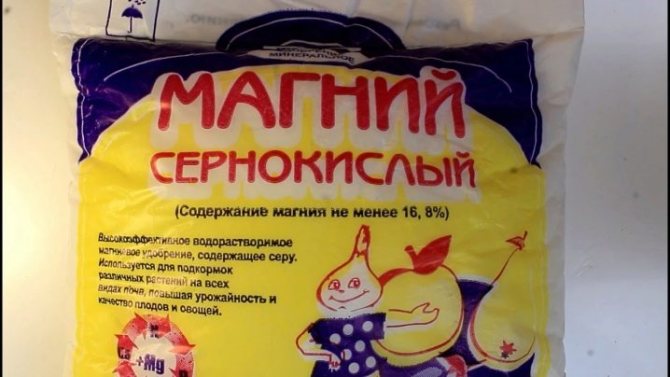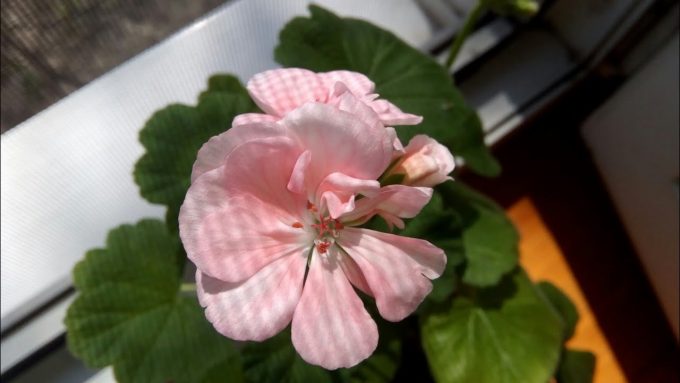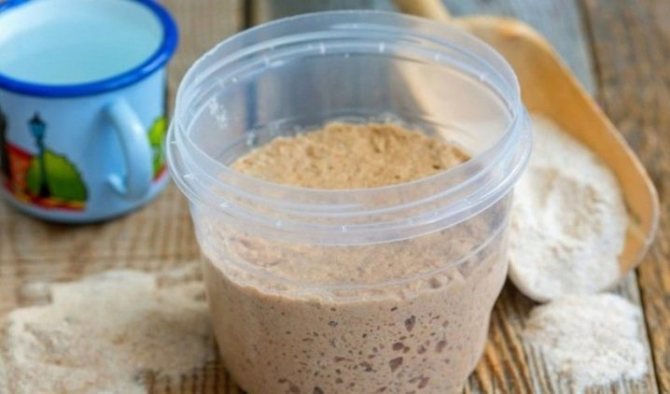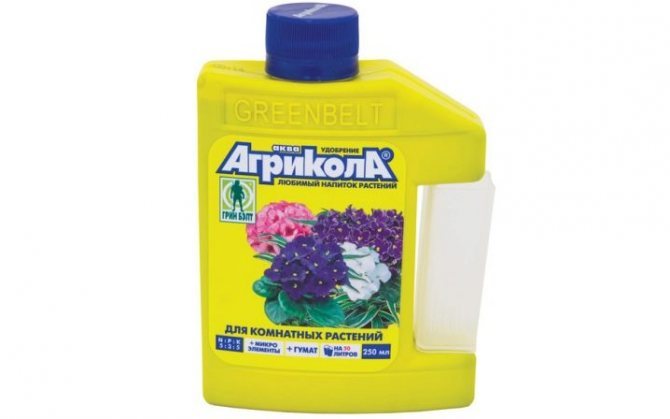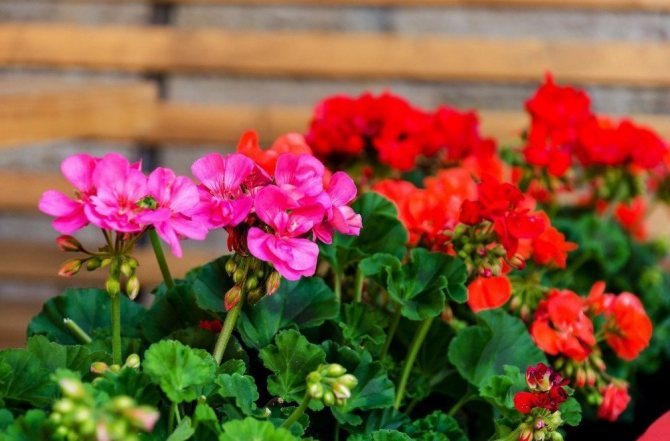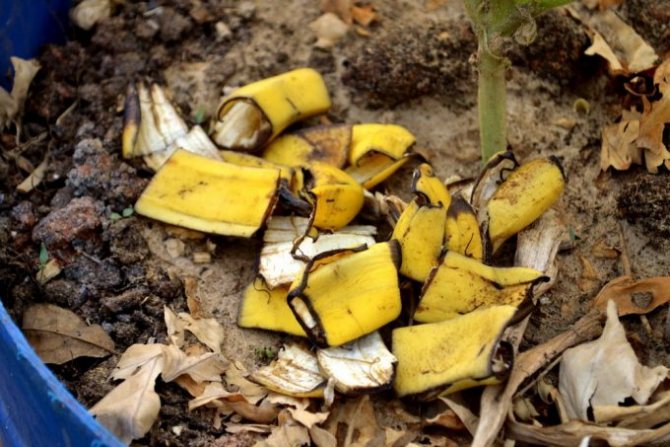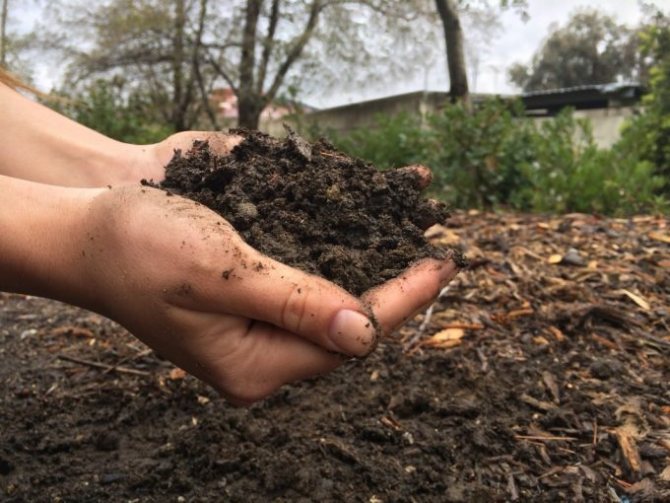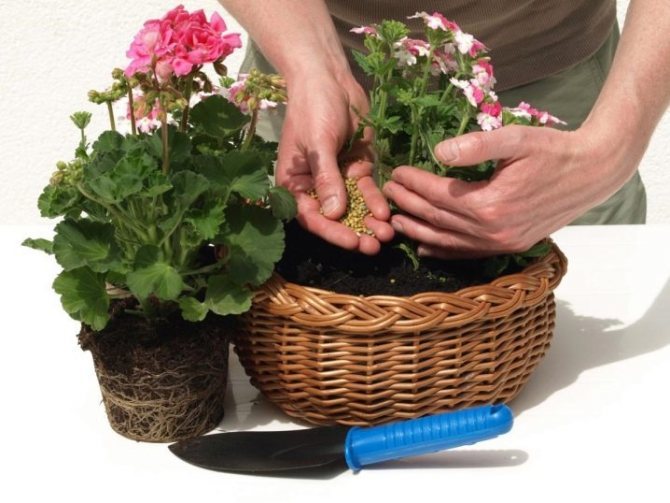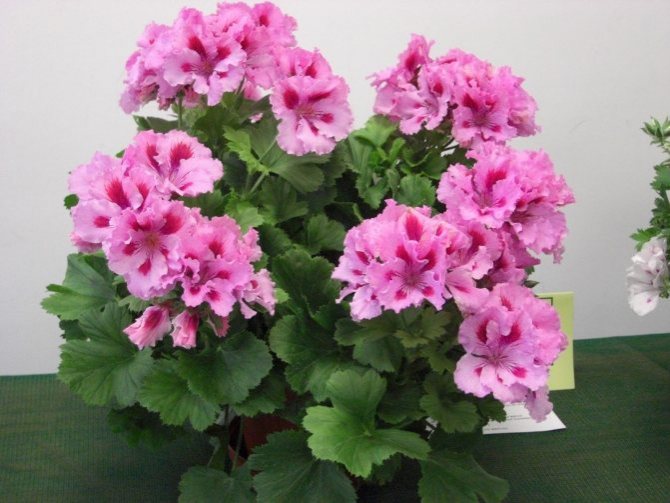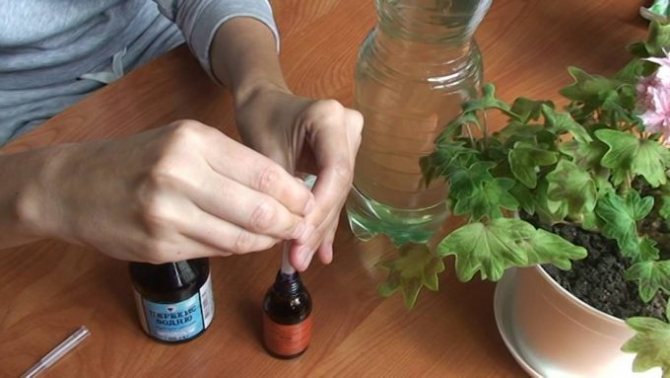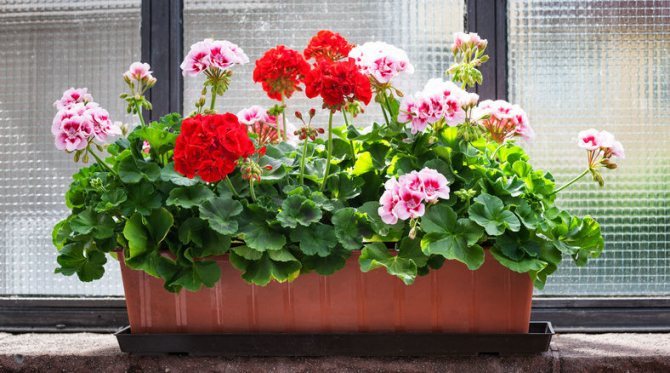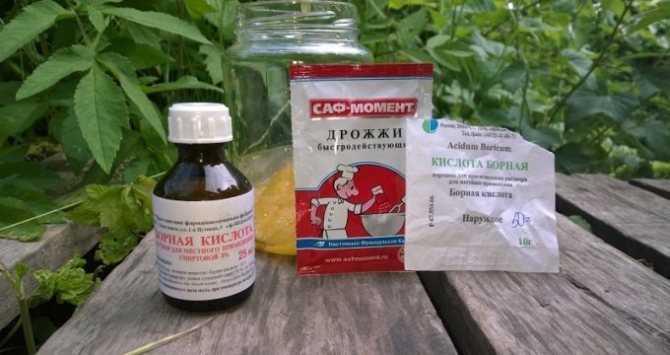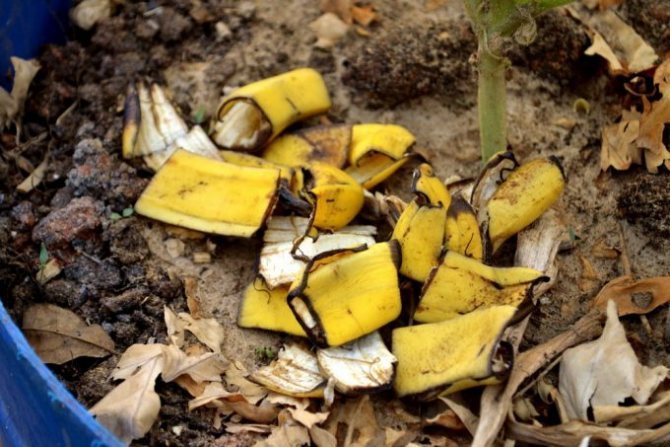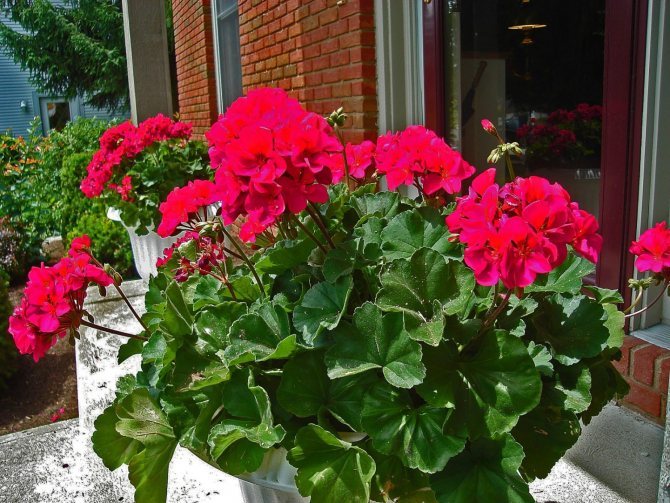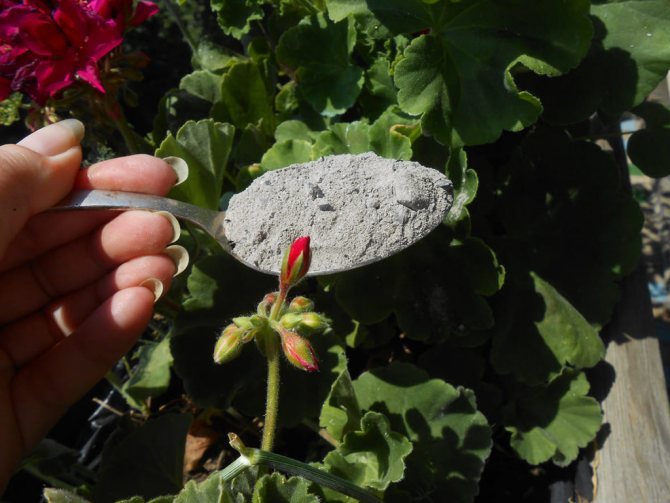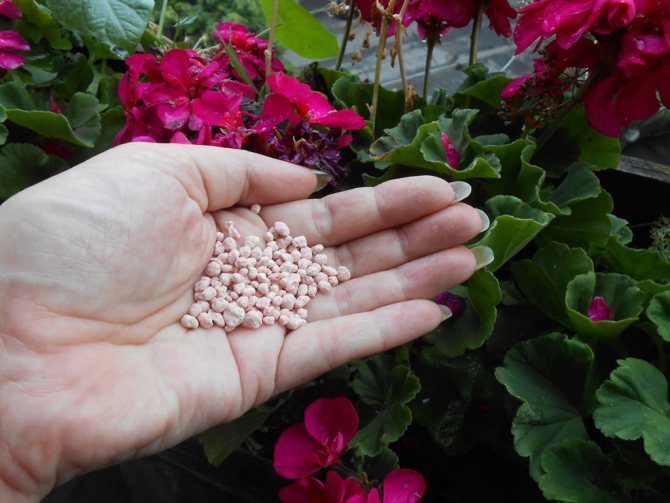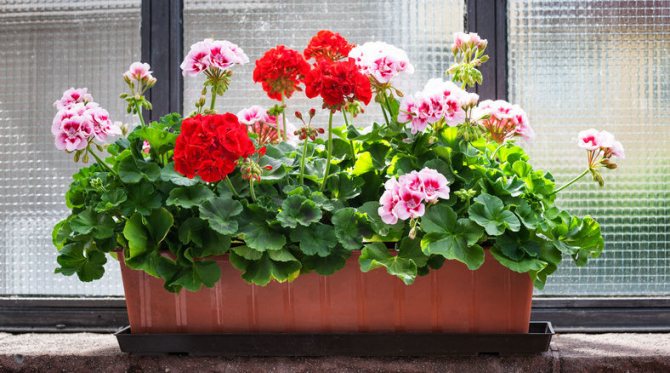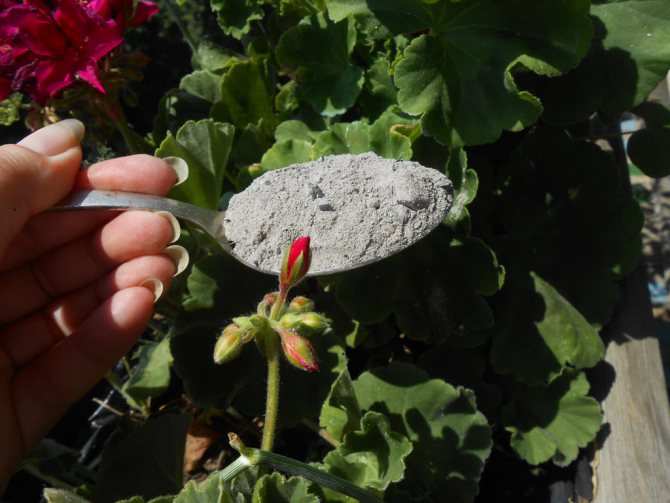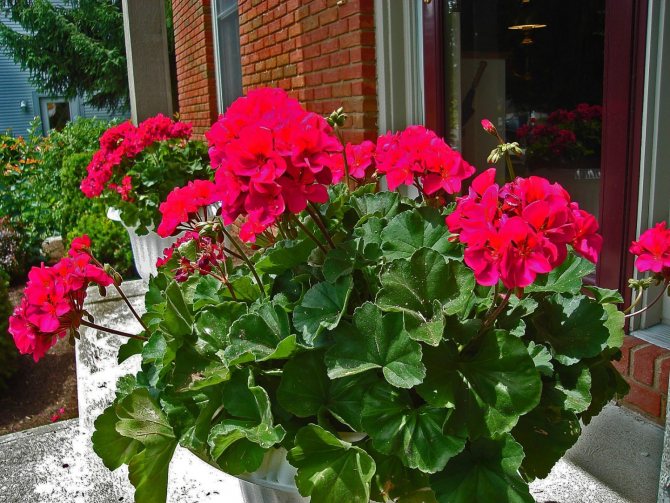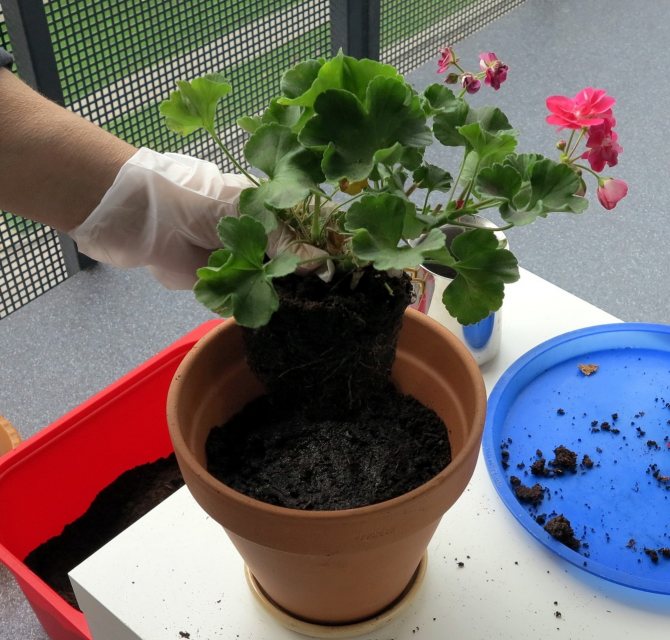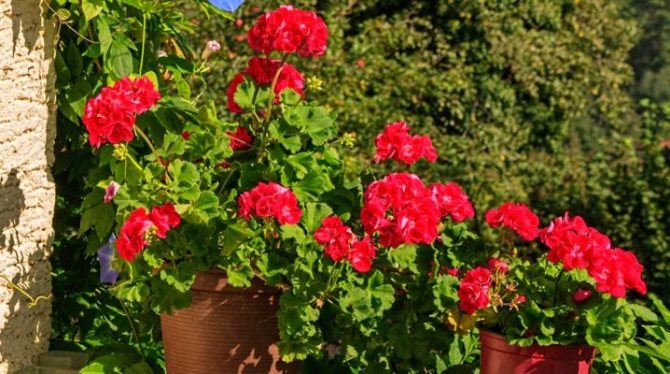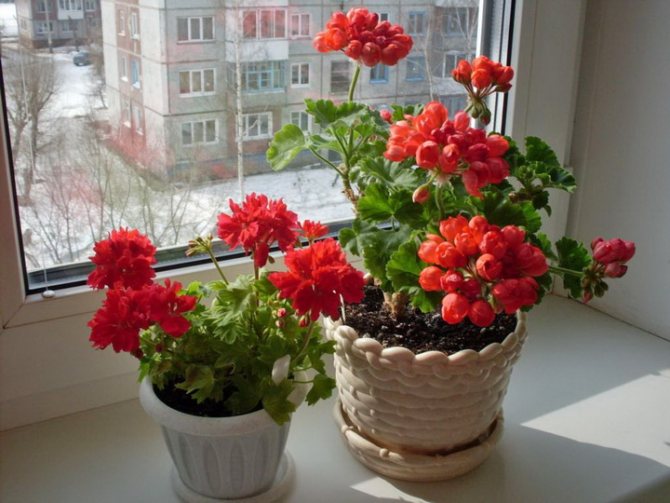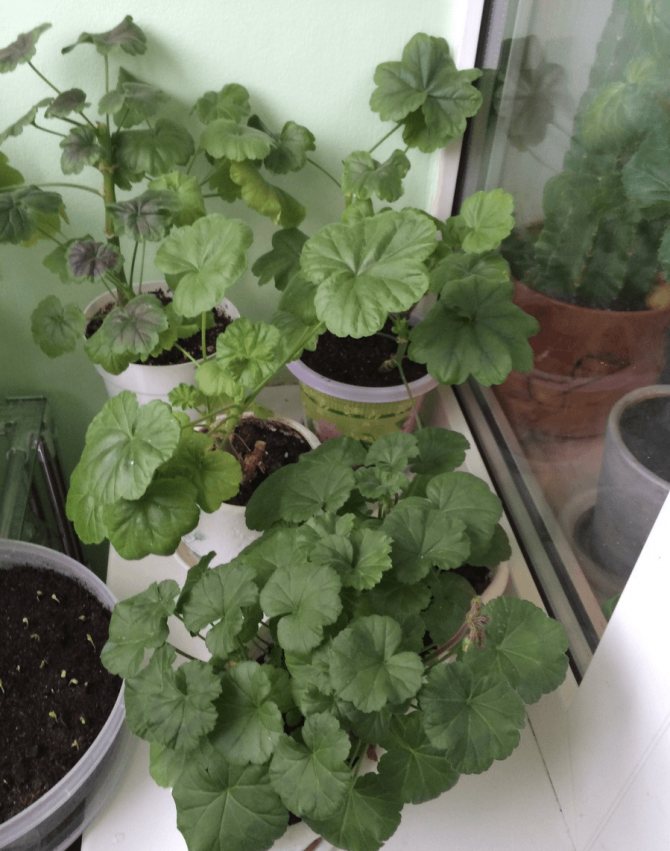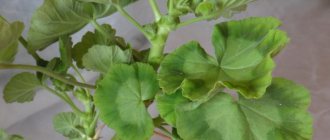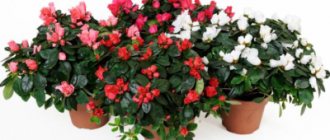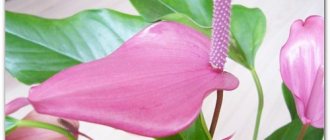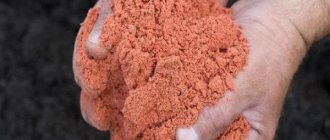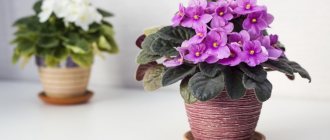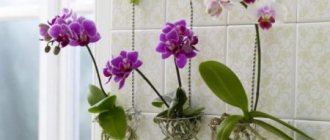Symptoms that geranium needs feeding
For the full development of pelargonium, as well as long lush flowering, it is worth applying fertilizers to the soil. Depletion can occur 3 months after planting. As a result, the flower will not be able to replenish the complex of essential nutrients. Therefore, flower growers are advised to additionally add vitamins and minerals regularly.
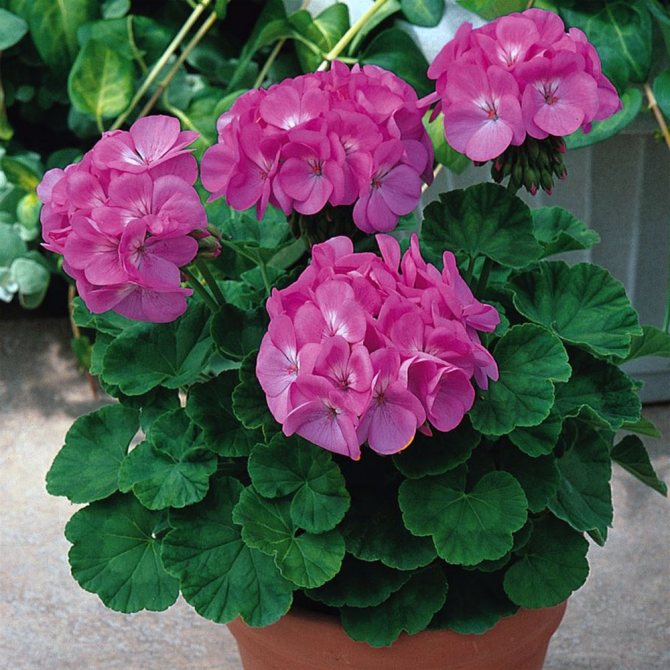
Indoor geranium
The main indicators that the plant lacks fertilizer are:
- slow growth in spring and summer;
- lack of flowering during the period of activity;
- fading sick look.
The lack of nutrients in the leaves is especially noticeable. In this case, they look pale, yellow, with dry edges, grow poorly and remain small.
The defeat of geraniums by various diseases is a clear sign of an insufficient amount of fertilizers in the soil.
Important! You cannot use fertilizers for a sick plant, for this you must first cure the flower.
A long absence of flowering indicates that the bush needs feeding. There are many options for fertilizing geraniums in this case. Each grower chooses a suitable composition individually.
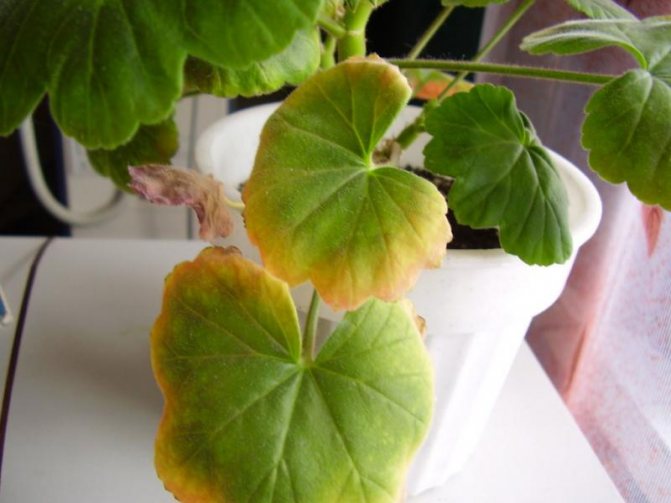

Withering plant with a lack of fertilizer
Features of caring for geraniums
The main advantage of geranium is its absolute unpretentiousness in maintenance, so this flower is easily suitable for both beginners in floriculture and professionals in this business. There are several factors worth noting to look out for when caring for a flower, to be able to constantly enjoy its bloom:
- Pelargonium does not like heat and easily tolerates cool air, but it is better not to allow the flower to be found at temperatures below +10 ° C. The optimum temperature regime is + 12–20 ° С.
- Geranium loves the sun, so it will feel better on the windowsill on the south side. However, avoid direct sunlight - they will be harmful to her.
- To increase branching and make the bushes more lush, the upper shoots are removed from the top of the geranium, that is, they are pinched.
- For health and long-term flowering, geraniums require regular pruning and removal of dried flowers.
- In the warm season (spring and summer), geranium requires feeding.
Fertilization frequency and dosage compliance
Plant feeding is classified into permanent, which is applied regularly according to the periods of flower development, and urgent, which is used in case of deterioration of the flower's condition.
How to water indoor flowers for rapid growth and abundant flowering
The frequency of feeding depends on the season. In winter and autumn, when geranium is at rest, the amount of fertilizer is reduced or completely stopped. With the onset of spring, feeding is resumed, it is especially important to regularly fertilize the flower during flowering. However, you should not get carried away, since an excess of nutrients will lead to a disruption in the development and growth of geraniums.
Important! During the period of active growth and flowering, geraniums can be fed no more than 2 times a week.
Fertilizers are applied to the soil an hour after watering, this method will not damage or burn the root system of the flower.
Top dressing geraniums depending on the season
In the spring, it is important to choose the necessary complex of minerals than to feed the geranium to obtain abundant flowering. For this, both ready-made special preparations and folk remedies are suitable, with which the plant is regularly watered 2 times a week. Fertilizer for geraniums usually begin to be applied in March.
For your information! Top dressing for geraniums in the spring will allow the plant to awaken after the winter dormant period and activate growth activity.
Active growth and flowering of geraniums takes place throughout the summer. During this period, experts recommend applying fertilizers at least once every two weeks. This will allow the flower to maintain a healthy decorative appearance and prolong flowering until autumn.
With the onset of the autumn period, the amount of dressings is gradually reduced to a minimum. As a result, the plant goes into a dormant state. At this time, it is recommended to feed the plant no more than 1 time in 1.5 months.
With the onset of winter, the growth and development of geraniums stops, flowering stops completely and the plant goes into dormancy. During this period, flower growers stop applying fertilizers to the soil, however, when keeping pelargonium at home, you can make a half dose of mineral dressings.
Important! In winter, when the plant is dormant, it is better to put it in a cool place. In this case, top dressing is not required.
How to prepare the solution?
For the preparation of the nutritional formula required:
- hydrogen peroxide (you do not need to stock up on the composition, it will certainly be found in your home medicine cabinet);
- iodine;
- settled water at room temperature;
- syringe or pipette for accurate determination of constituents;
- container with a lid for mixing the components.
The need for water is 1 liter, for iodine - 0.6 ml, and hydrogen peroxide - 1 ml.
The proportions cannot be violated! An overabundance of ingredients will only harm the flower.
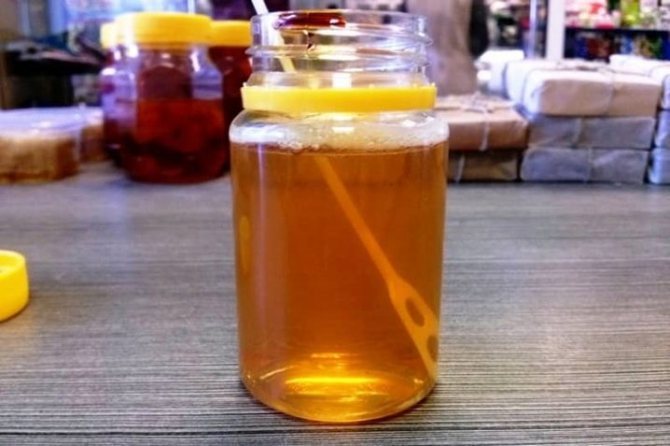

In the absence of a graduated instrument (beakers, syringe, pipette), the dose can be determined in drops. There are 23 drops in 1 ml of hydrogen peroxide, and 48 drops in 1 ml of iodine. Through simple calculations, we obtain the required number of drops of iodine 48 x 0.6: 1 = 28.8 drops.
Correctly measured ingredients should be thoroughly mixed until a homogeneous mixture is obtained. If iodine is used without hydrogen peroxide, then only one drop will be needed per liter of water. It is very important not just to water the flower with a nutrient solution, but to do it right. Otherwise, you can cause significant damage to the plant.
It's easy to remember the rules. First, the lower dried leaves are removed from the plant, access to the ground is freed. The second stage is the preparation of the nutrient solution. After that, the earth is loosened and thoroughly moistened. Thorough moistening is not meant to be sprinkled with a large volume of water, but by the expectation of complete absorption of the poured liquid.
What can you feed geraniums
How to feed fuchsia for abundant flowering
Most often, fertilizers are used to obtain a luxurious royal look of a flower. How to water the geranium so that it blooms profusely, the specialist of the flower shop will tell you, offering a ready-made complex of dressings. The composition of such preparations includes a balanced complex of trace elements important for geranium:
- nitrates;
- phosphates;
- potassium;
- iodine.
Also, the finished products include minerals such as iron, sulfur, manganese, magnesium and calcium. After transplanting and to normalize growth, heteroauxins and glucose are introduced into the soil.
In addition to ready-made industrial complexes, you can use many folk remedies than to feed geraniums. Iodine and hydrogen peroxide are some of the popular drugs in every home medicine cabinet. Feeding geraniums for abundant flowering with iodine and peroxide is prepared at the rate of a drop of iodine and 2 ml of peroxide per 1 liter of water.No more than 60 ml of this solution is poured under one plant at a frequency of 1 every 3 weeks.
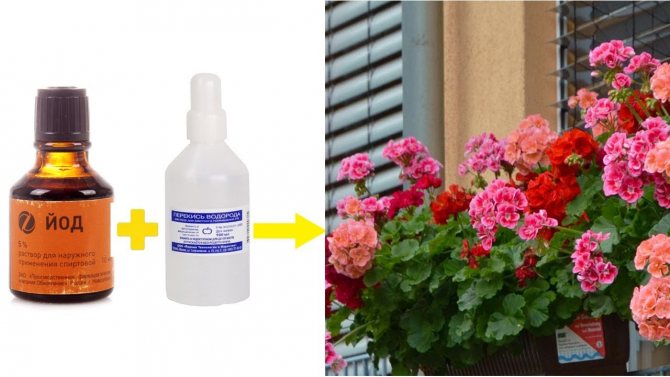

The use of iodine and peroxide for pelargonium
In addition to iodine and peroxide, another pharmacy tool, boric acid, will help to make the plant bloom, in addition to iodine and peroxide. This product doubles the number of flowering geranium inflorescences. Initially, a concentrated solution is prepared from 0.5 g of powder and 2 tablespoons of boiled water, then this solution is introduced into a container with 1 liter of pure water. Boric acid treatment is carried out through spraying in the morning until the buds open.
A water solution of regular wood ash is a good option for watering geraniums to make it bloom. To do this, dilute 1 tablespoon of ash in 1 liter of warm water and water the soil in a pot.
Sweet water is used to feed the flower with organic fertilizers. Since geranium is considered a sugar-loving plant, you can water it with sugar and water (take 3 tablespoons of sugar for 1 liter of water).
Memo! Mullein is not recommended for feeding geraniums with organic fertilizers.
To restore the balance of calcium so that geraniums can grow normally, dairy products are used. About 150 ml of milk is poured into a liter container with water. The liquids are mixed and watered with this flower.
In the role of a growth stimulator, in addition to finished preparations, ordinary yeast is used. Pour 120 g of product into 1 liter of water and pour it over within 3-5 minutes after cooking.
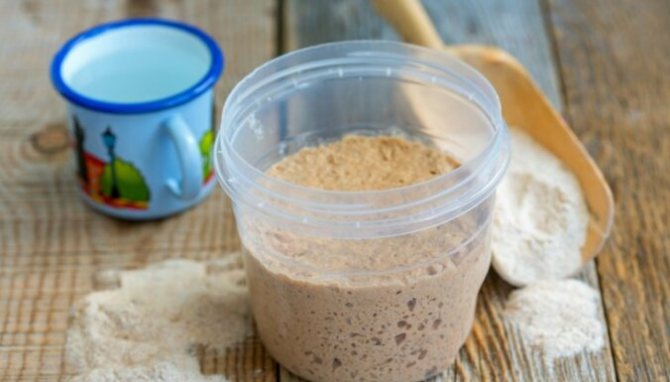

Yeast as fertilizer for geranium
Camphor will help to revive the plant after illness and restore growth. With a solution of 1 teaspoon of castor oil in 1 liter of water, you can water the soil in a flower pot or spray the leaves and young shoots.
Organic feeding
Three times a year, the houseplant must be fed with fertilizers of plant or animal origin. The introduction of organic matter requires special care. In case of an overdose, you can destroy the houseplant.
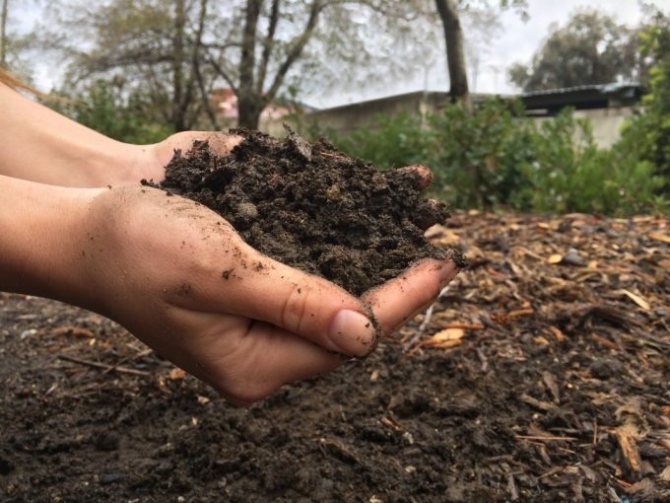

For the splendor and brightness of the flowering of pelargonium, it is necessary to introduce a long period of boiled bird droppings. To water the plant, add one liter of peroxidized organic fertilizer to 40 liters of water. For the same amount of mullein, only 10 liters of water can be added. Fresh manure or dung is not applicable.
Popular: Tips for growing Brussels sprouts outdoors
If you choose between these two fertilizers, then, cow dung is more gentle than poultry manure. In principle, in order for geranium to amaze the eye with the splendor of flowering, it only needs mineral complexes. Organic matter is rarely added.
Additional feeding
To increase the volume of peduncles in geraniums, it is advisable to additionally add another important mineral component - magnesium sulfate. This combination of substances promotes the activation of the formation of flower umbrellas, so the flowering process will be long.
Let's start preparing a feeding aqueous solution. It will need five liters of settled water, 15 grams of magnesium sulfate. The components are stirred and the plant can be watered. Water for the preparation of the solution is taken at room temperature, so the crystals will dissolve faster and the feeding will be better absorbed.
Magnesium may not combine well with all mineral complexes, so this should be taken into account when watering. For example, because of it, there is a poor absorption of calcium by the plant, but it has a positive effect on the nitrogenous and phosphorus compounds. For this reason, geraniums need to be watered with a separate calcium dressing.
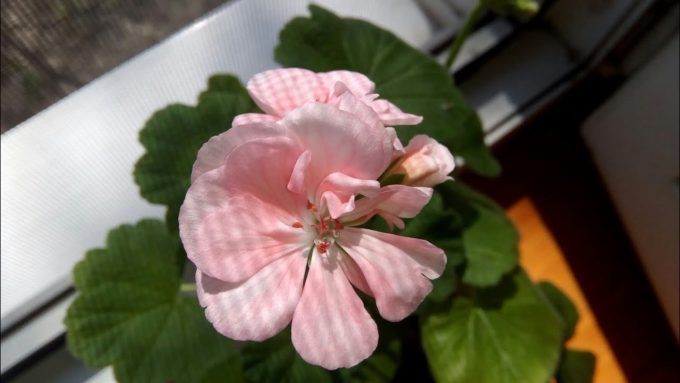

How to water geraniums for abundant flowering at home and on the street
How to feed violets for abundant flowering at home
Unlike indoor geranium, street geranium can receive the necessary nutrients from the soil.However, for a more lush flowering, gardeners use fertilizing with phosphorus and potassium. These substances will strengthen the plant and prolong flowering. When buying a complex fertilizer with potassium and phosphorus, you should adhere to the dosage indicated on the package.
Attention! Geranium does not like too fertile soil, so you should not get carried away with mineral fertilizers. This will lead to an increase in deciduous mass and inhibition of the flowering period.
Just like indoor geranium, you can water a street plant with iodine and sweet water.
The nature of the princess
The one who is able to knock out a novice geranium grower is royal pelargonium. Typical problems with it look like this: a person buys an already flowering bush, happily carries it home, admires lush, double flowers for about a month. And then the pelargonium fades. "Pauses" - as its owner thinks. Waiting for a year. Then the second one. And - nothing happens, the geranium does not want to bloom
The fact is that the content of the royal geranium has its own nuances, to which ordinary geranium, ampelous and star-shaped geraniums are indifferent.
- In winter, during the dormant period, royal pelargonium must be kept at a temperature of 16-18 degrees.
- Water it in small doses, but every day! And it is better, if the tips of the roots are visible in the drainage holes in the bottoms of the pots, pour water into a tray, from where the royal person herself will extract as much as she needs.
- Unlike other geraniums, with distrust of organic fertilizers, the royal uses them with pleasure. They are especially important for her during the awakening period.
- She doesn't like drafts.
- Nitrogen feeding after waking up is a must! But it is also necessary to add a small amount of magnesia sulfate to the soil.
If these conditions are met, royal geraniums will definitely bloom in the spring!
How to fertilize geranium seedlings and young plants for growth
A young plant is significantly different from an adult, in this regard, the care, including feeding, will be different. The perennial flower is a profusely flowering bush with a large deciduous mass. Such geraniums must be fed at least 2 times a week.
Young sprouts do not require a large amount of fertilizer, but it is still important to provide them with a certain complex of minerals and organics. To accelerate growth, yeast is used, which contributes to an increase in foliage, strengthens the plant and activates the early flowering of geraniums.
Attention! It is especially important to make top dressing when transplanting a young bush to a permanent place of growth.
As organic matter, honey or sugar water is used, which gives young pelargonium a full range of essential nutrients for full development. To provide plants with mineral components, preparations containing phosphates, nitrates, calcium, zinc are used.
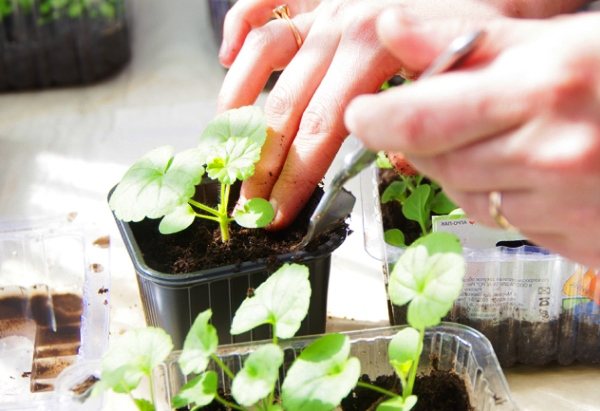

Transplanting a young geranium
Also, the shell of a chicken egg is used to fertilize a young plant. This calcium-containing top dressing will help the geranium to grow stronger and bounce back after transplanting.
For the prevention of infectious diseases, wood ash is used. As not only a fertilizer, but also a natural antibiotic, it will preserve the health of young pelargonium and help it actively develop and grow.
Fertilization features
The use of fertilizers is a great way to help keep the flower alive during intensive development or under stress (for example, when transplanting). However, it is worth remembering that the nutrients that help the flower grow healthy and develop well can also harm, if misused and oversaturated. When using top dressing, it is important not only to strictly follow the instructions, but also to closely monitor the condition of the plant itself.
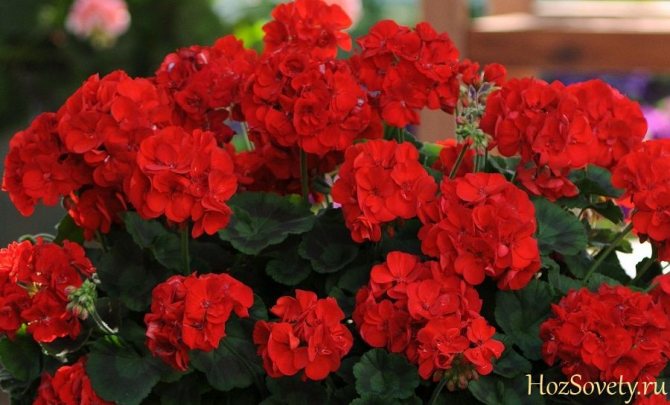

Against yellowing of leaves
Geranium owners often face such a common problem as yellowing of the leaves of the plant. Before taking any action, you need to understand the reasons that led to this state of the flower. And there can be many reasons:
Recommended reading
What to do if geranium does not bloom
- incorrectly selected pot sizes - a pot size of 10–12 cm in diameter and up to 15 cm in height is considered suitable;
- the wrong watering regime - you need to remember that the ideal option for geraniums is the “infrequently, but abundantly” regime;
- flower diseases;
- improper feeding - a large amount of nitrogen in mineral fertilizers can negatively affect the health of the flower, in this case it should be removed from the feeding for a while, completely replaced with phosphorus and potassium, and in the future use smaller doses.
When transplanting
There is a widespread belief that when making constant top dressing, there is no need to transplant a flower. But it is not so. Since the flower is constantly growing and its root system grows, it is recommended to transplant once a year. There are cases of emergency transplantation - when the soil is too flooded with water and the plant begins to show signs of extinction: yellowed leaves, the appearance of rot on the stem, etc., or when the pot has turned over and the soil with the root system has been damaged. When transplanting, if it is not a ready-made mixture, fertilizers are applied immediately, if a substrate is used, after two months.
Important! Geranium prefers room temperature water for irrigation and reacts extremely negatively to spraying the leaves.
What mistakes can there be?
Perennial pelargonium should never be overfed, as this can lead to the development of root rot. But even with a lack of nutritional aliment, the leaves of the plant lose their color brightness and elasticity. If pelargonium does not bloom, then the reason may be too large a pot or an excess of nitrogen fertilizer in the substrate.
Pelargonium from overfeeding begins to increase the mass of green leaves, thereby taking all the strength from the peduncles. To fix this, carefully remove the flower from the pot, gently shake off the soil, and inspect the roots for decay. If everything is in order, the plant should be transplanted into a pot that is more suitable for the root system. Don't forget new drainage and loose drainage.
IMPORTANT: Pelargonium transplanted into a new pot does not need to be fed for the first 2-3 months. She will receive all the nutrition she needs from fresh soil. Pelargonium should be watered after transplanting regularly, but in moderate doses. The lighting for the flower should be sufficient.
Also, make sure that there are no drafts and temperature changes.... These measures will help your beauty to start blooming again profusely in a month. Remove the bush from the pot, gently shake off the soil, inspect the root system. Now match the pot to the size of the plant's root system. Do not forget about good drainage, loose soil in which you plant your flower again. Water sparingly but regularly. Place in a well-lit area. After some time, pelargonium will definitely bloom.
Signs of improper fertilization
Using top dressing, you also need to know the signs of plant behavior with a shortage or, conversely, an overabundance of any substance introduced into the soil. Let's consider the most common ones:
- Nitrogen. Excess nitrogen in the initial stages is manifested in the lush vegetation of geraniums and the almost complete absence of flowers. The stems become soft and friable, and the flower itself is very vulnerable to fungal diseases. In the future, the leaves turn yellow, become covered with brown spots and curl around the edges. With a nitrogen deficiency, the growth and development of the plant slows down, the foliage acquires a light green color, the stems become thin and fragile. Brown spots may appear on the lower foliage.
- Phosphorus. A large amount of phosphorus in the soil leads to a loss of the plant's ability to absorb other nutrients, which disrupts metabolism. With a shortage, the root system stops developing and growing, the leaves dry up and fall off.
- Potassium. With an excess of potassium in the soil, there is a large delay in the growth and development of the plant, the leaves fade and become stained. With a shortage, the foliage loses its color, turns pale and can acquire a bluish-green color. Leaves begin to grow unevenly, lose their shape, and may be wrinkled or curled.
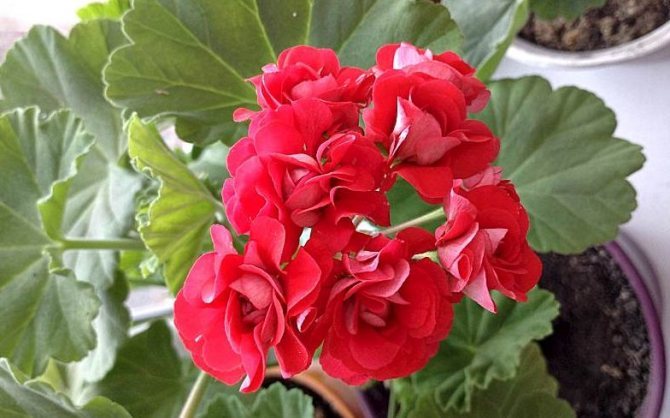

With very simple, but always systematic and proper care, even a novice florist will be able to enjoy the lush and blooming geraniums, which will decorate any home with its look. At the same time, pelargonium easily multiplies, transplants and has a rather long flowering period - all these qualities make this flower one of the favorite plants of florists.
How to save dying plants?
Pelargonium is ruined by both excess and lack of water. If you carefully observe your pet, such extreme situations will not happen: she herself will warn the owners about the discomfort. When a flower is thirsty, its leaves begin to dry at the edges. If the bush has become lethargic, the leaves have lost their elasticity and turned yellow - the roots are excessively flooded with water and begin to rot.
Overflow often occurs when owners are away for days or weeks. They read tips on how to set up "automatic watering" with a high bucket and string drawn from the water into the pots. Someone did not tinker with the humidification system on their own, but bought a special device in a hardware store. All of these techniques are good, but they need to be adjusted. If you use a cord that is too thick, the water will start to flow out very quickly and will flood not only the flowers, but also the neighbors below. Check the system a few days before you leave, make sure it moisturizes but doesn't flood the flowers, and you can go anywhere for a month.
It is not difficult to save an overdried flower at home. Place the pot in a deep pan or bowl of water. Wait until the soil picks up the required amount of moisture, and then remove it from the water and let the excess liquid drain.
If you have poured pelargonium, remove it from the soil, rinse the roots with a light pink solution of potassium permanganate. Cut off all rotten processes, and sprinkle the wounds with crushed coal. Plant the flower in new soil and water sparingly in the future.
When we look at catalogs of flower collections, at the sight of exotic plants of unprecedented beauty, our eyes run up, we want to take all the species home. Often expensive purchases end in disappointment: an inexperienced grower has pitiful twigs on the window instead of a lush bush without a hint of buds. It is better not to tackle capricious, demanding plants at once. Start with a simple task: put an unpretentious geranium on the window and learn how to take care of it so that it blooms profusely and the bush covered with huge colorful caps arouses the envy of all neighbors. Go from simple to more complex, and after a while you will learn to understand the needs and wishes of each of your green pets.
Description of the plant
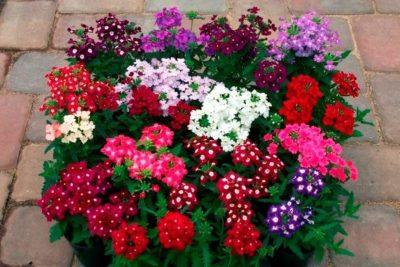

It is an annual and perennial plant. The height of the stems reaches 50 cm. The leaves are of a bright dark green color. The flowers of the plant are very beautiful and large. In some geranium species, they are collected in inflorescences. The leaves of the culture have a refreshing, mint and lemon scent. There is a pattern on the leaves, presented in the form of a white border or stripes of various colors. Geranium is distinguished by incredibly beautiful flowering. Umbrellas of flowers are concentrated on a thin stalk, and the leaves look like a human palm. If the geranium does not have enough lighting, then its flowering decreases, and the leaves and flowers become faded.

